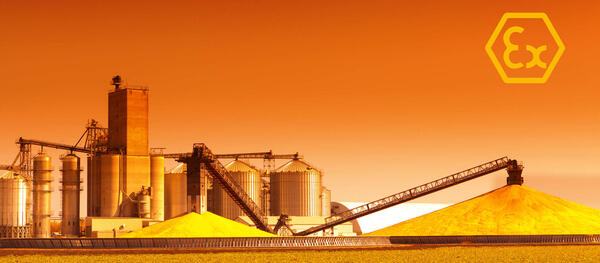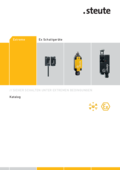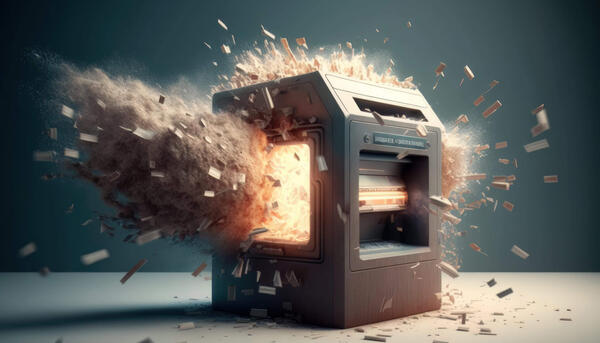
High risk of explosions in industrial applications
In many areas of mechanical and plant engineering, explosion protection is an important topic – not only in the chemicals and petrochemicals industries or in mining, but also in e.g. the food and pharmaceuticals industries, and even in light metal processing. Depending on the application and the environment in question, all manner of ignition sources can be present. In order to avoid explosions and to guarantee both personal and machine safety, diverse protective regulations are in place around the world, such as the ATEX directives and the IECEx standards.
steute expertise
Everything you need to know about Ex zones, temperature classes, types of ignition protection, explosion protection, ignition sources and the use of explosion-proof switches and sensors, as well as their documentation and certification, you can find out from steute. Specialist expertise, the realisation of numerous customised projects, as well as the development and optimisation of Ex-protected products have made us a true specialist in all things Ex.
Depending on the variant selected, our extensive product range is certified to all relevant European and international standards and directives (ATEX, IECEx, cCSAus, INMETRO, JPEx, CCC, UKEx) for Ex zones 1, 2, 21 and 22, and is thus ideally suited to hazardous areas.
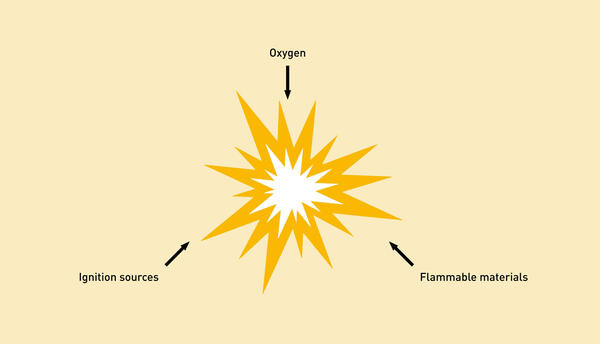
What is an explosion?
In order for an explosion to occur, three factors must be present: oxygen, a flammable material and an ignition source. These conditions are fulfilled in many different branches of industry. Flammable gases, fumes or dusts are to be found in the chemicals industry, but also in oil refineries, in wood processing, the food industry, the production of building materials, in storage tanks, filling plants and loading facilities, as well as in storage facilities for powdered goods. A potential ignition source could be a spark from a switching device, for example. But an explosion can also be triggered by friction, electrostatic charge or mechanical impact.
Ignition sources
The basic standard EN 1127-1 precisely differentiates between the many types of ignition source. A difference is made between:
- Hot surfaces
- Flames, hot gases and particles
- Mechanically generated impact, friction and abrasion processes
- Electrical devices and components
- Stray electric current, cathodic corrosion protection
- Static electricity
- Lightning
- Electromagnetic waves in the frequency range from 104 Hz to 3 × 1011 Hz (high frequency)
- Electromagnetic waves in the frequency range from 3 × 1011 Hz to 3 × 1015 Hz
- Ionising radiation
- Ultrasonic waves
- Adiabatic compression and shock waves
- Exothermic reactions, including spontaneous combustion of dusts
Flammable materials
Flammable materials are explosive if they are processed as powders or dusts and have sufficient surface area to react with the oxygen in the air. Everyone is familiar with this phenomenon in connection with wood or coal dust, but all other organic substances, as well as some metals, become flammable when they are finely ground and in the correct concentration. Smaller dust explosions, otherwise known as deflagrations, occur nearly every day. The damage they cause is usually minimal. In contrast, one first little explosion that swirls up dust, igniting it in a chain reaction, can be disastrous.
Oxygen
The physical reasons for explosions are well researched – not least because a fundamental drive principle, the combustion engine, is based on a series of controlled explosions. Those who have maybe tried before to tune a carburettor themselves know the principle: if the mixture is too thin or too thick, the engine will not work properly. The same is true of explosions. There is an ideal ratio of oxygen in the air to flammable material, and this ratio can be determined using stoichiometry. If in proportion to the available level of oxygen there is too little or too much flammable material, the impact of the explosion will be reduced. Explosions also have limits, i.e. once a certain ratio is exceeded, or if it is not reached, there will be no explosion. This is an important parameter for primary explosion protection: if it is possible to fall below the explosion limit at all times, e.g. through regular air exchange via a ventilation system, an explosion can be ruled out.
Ex zones
Hazardous Ex areas are divided into zones in accordance with IEC 60079-10-1 (gas Ex) and IEC 60079-10-2 (dust Ex), whereby the frequency and duration of the occurrence of an ignitable atmosphere is crucial for the categorisation. A differentiation is made between:
- an explosive gas atmosphere (a mixture of air and gas or steam existing under atmospheric conditions in which, after ignition, combustion continues throughout the unconsumed mixture)
- and an explosive dust atmosphere.
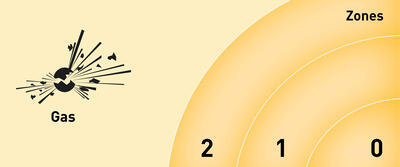
Gas Ex zones
Zone 0: An area containing an explosive gas atmosphere permanently or for long periods
Zone 1: An area in which an explosive atmosphere can be expected to form during normal operations
Zone 2: An area in which an explosive atmosphere is not expected to form during normal operations, and should one occur, then only seldom and for short periods
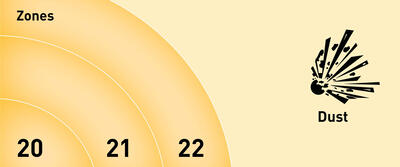
Dust Ex zones
Zone 20: An area containing an explosive atmosphere in the form of a cloud of flammable dust permanently or for long periods or frequently in the air
Zone 21: An area in which an explosive atmosphere can occasionally be expected to form during normal operations in the form of a cloud of flammable dust in the air
Zone 22: An area in which an explosive atmosphere is not expected to form during normal operations in the form of a cloud of flammable dust in the air, and should this occur, then only for short periods
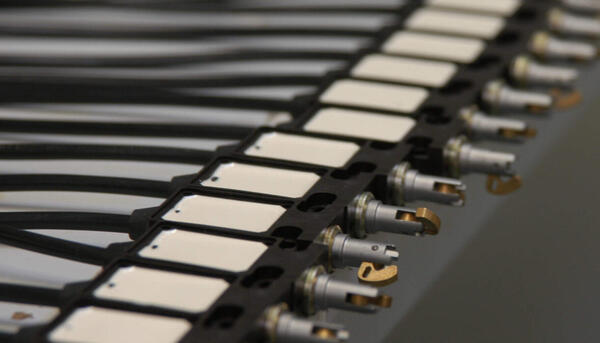
Ignition protection types
Flameproof enclosures
A flameproof enclosure is one of several ignition protection types which are described in the IEC 60079-1 family of standards. Should a spark or an arc be present inside the switching device, it must be guaranteed that this explosion is not transferred to the atmosphere outside the enclosure. The enclosure then has to be able to withstand the pressure of an internal explosion. An air gap provides the necessary pressure discharge.
Encapsulation
In accordance with IEC 60079-18, encapusaltion is a further ignition protection type which is especially used in conjunction with non-contact switching devices. All parts which could ignite an explosive atmosphere through switching sparks are encased in potting material.
The reed contact is cast in a plastic tube which is placed in a brass case and then cast again. The potting material is chemically resistant, impact-resistant and only penetrated by the electric cable. This guarantees that any sparks or excessive heat cannot escape to the outside, i.e. to the ignitable atmosphere.

Ex protection solutions
Our Ex-protected products, such as Ex solenoid interlocks, Ex position switches and Ex safety sensors facilitate the safeguarding of e.g. industrial machines and plants. This guarantees both personal safety and process reliability in explosive zones. In our product portfolio you will also find wireless Ex solutions.
The robust products from steute correspond to the highest quality standards, protection class IP6X, as well as the European directives, internationally valid standards and country-specific regulations (ATEX, IECEx, cCSAus, INMETRO, JPEx, CCC, UKEx), some guaranteeing Ex protection up to zones 0 or 20. On request our products and solutions can be individually customised and approved for a wide range of additional countries.
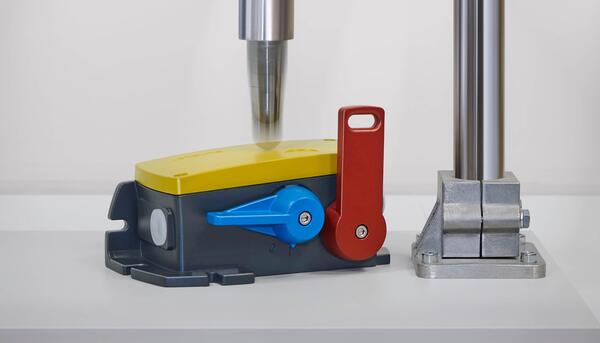
Impact test for Ex switches and sensors
In order to guarantee the functionality and quality of our products even years down the line, the switches and sensors are stored in a climate chamber for four weeks, where they are artificially aged by about 10 years. In addition, the mechanical robustness of all products used in Ex zones 1 and 2 (gas Ex) or 21 and 22 (dust Ex) is tested using an impact test. A testing mass made out of tempered steel is dropped onto the product with 7 J from a pre-defined height.
International approvals
In accordance with the relevant directives and standards, steute has acquired the following product approvals:
|
|
Is the approval you are looking for not listed? Then please contact us. On request our products can be individually customised and approved for a wide range of additional countries. You can find all certificates for the steute switches and sensors on the relevant product pages.





























